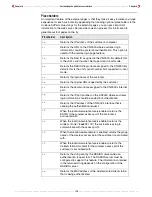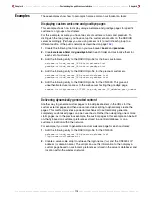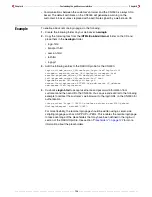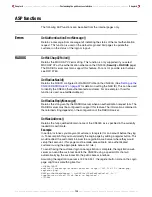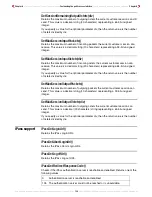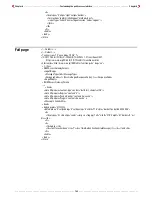
Chapter 6 - - - - - - - - - - - - - - - - - - - - - - - - - - - - - - - Customizing the public access interface - - - - - - - - - - - - - - - - - - - - - - - - - - - - - - - Chapter 6
- - - - - - - - - - - - - - - - - - - - - - - - - - - - - - - - - - - - - - - - - - - - - - - - - - - 129 - - - - - - - - - - - - - - - - - - - - - - - - - - - - - - - - - - - - - - - - - - - - - - - - - - -
ASP functions
The following ASP functions can be called from the internal pages only.
Errors
GetAuthenticationErrorMessage()
Returns a message (from message.txt) indicating the status of the last authentication
request. This function is used on the default Login and Fail pages to update the
customer on the status of the login or logout.
RADIUS
GetMsChapV2Failed()
Returns the MS CHAP V2 error string. This function is only supported if you select
MSCHAP V2 as the authentication scheme on the CN3000 (
Security > RADIUS
page).
The RADIUS server must also support this feature. For a list of possible return values
see RFC 2759.
GetRadiusNasId()
Returns the NAS ID configured for RADIUS Profile on the CN3000. (See
“Setting up the
CN3000 RADIUS client” on page 97
for details on setting the NAS ID.) This can be used
to identify the CN3000 that authenticated a customer. For an example of how this
function is used, see GetNasAddress().
GetRadiusReplyMessage()
Returns the string sent by the RADIUS server when an authentication request fails. The
RADIUS server must be configured to support this feature. The information contained in
the returned string depends on the configuration of the RADIUS server.
GetNasAddress()
Returns the fully-qualified domain name of the CN3000 as is specified in the currently
loaded SSL certificate.
Example
In certain instances you may want customers to register for an account before they log
in. To accomplish this you could modify the Login page by adding a register button. This
would redirect the customer’s browser to a registration web server where they would
setup their account. (This page must be made accessible to non-authenticated
customers using the appropriate access list rule.)
To avoid having the customer login once registration is complete, the registration web
server can send the customer back to the CN3000 using a special URL that will
automatically log the customer into the public access interface.
Assuming the registration server is 192.169.30.1, the register button code on the Login
page might look something like this:
<FORM><INPUT
onclick="javascript:window.location='https://192.168.30.1/demo-php/
register.php?
NASip=<%GetNasAddress();%>&NASid=<%GetRadiusNasId();%>';"
type=button value="Click Here to Register">
</FORM>
Summary of Contents for CN3000
Page 1: ...CN3000 Administrator s Guide...
Page 8: ...Table of Contents 8...
Page 60: ...Chapter 2 How it works Chapter 2 60...
Page 94: ...Chapter 4 Scenarios Chapter 4 94...
Page 106: ...Chapter 5 Activating the public access interface Chapter 5 106...
Page 211: ...Chapter 10 SSL certificates Chapter 10 211...
Page 292: ...Chapter 13 The configuration file Chapter 13 292...
Page 370: ...Chapter 16 Sample setup Microsoft RADIUS Chapter 16 370...
Page 396: ...Chapter 16 Sample setup Microsoft RADIUS Chapter 16 396...
Page 414: ...Chapter 17 Experimenting with NOC authentication Chapter 17 414...




